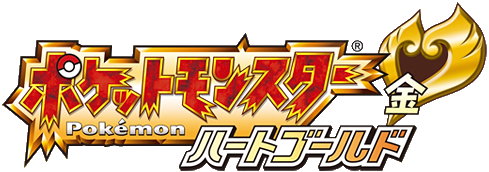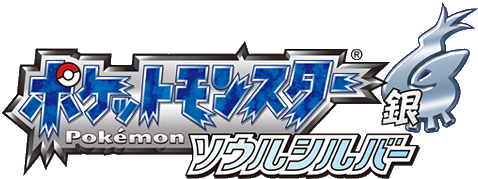Pokémon HeartGold and SoulSilver Versions
| Pokémon HeartGold and SoulSilver Versions | |
|---|---|
[[File:  |250px]] |250px]]Pokémon HeartGold and SoulSilver's logos, depicting a stylized Ho-Oh and Lugia, respectively. | |
Basic info
| |
| Platform: | {{{platform}}} |
| Category: | RPG |
| Players: | 2 players simultaneous |
| Connectivity: | None |
| Developer: | Game Freak |
| Publisher: | Nintendo |
| Part of: | {{{gen_series}}} |
Ratings
| |
| CERO: | N/A |
| ESRB: | |
| ACB: | N/A |
| OFLC: | N/A |
| PEGI: | N/A |
| GRAC: | N/A |
| GSRR: | N/A |
Release dates
| |
| Japan: | Fall 2009 |
| North America: | N/A |
| Australia: | N/A |
| Europe: | N/A |
| South Korea: | N/A |
| Hong Kong: | N/A |
| Taiwan: | N/A |
Websites
| |
| Japanese: | ポケットモンスター ハートゴールドおよびソウルシルバー |
| English: | None |
Pokémon HeartGold Version (Japanese: ポケットモンスター ハートゴールド Pocket Monsters Heartgold) and Pokémon SoulSilver Version (Japanese: ポケットモンスター ソウルシルバー Pocket Monsters Soulsilver) are paired Generation IV remakes of the Generation II games Pokémon Gold and Silver.
Much like Pokémon FireRed and LeafGreen revisited the Generation I story of Kanto, HeartGold and SoulSilver will revisit the story of Johto, with the player's starting area being New Bark Town. As there are no definitive details about the games yet, it is currently unknown whether or not changes to the plot and course of the original games will be made. What is currently known, however, is that the geography of New Bark Town, while updated, has not changed. The player's rival, Silver, lurks outside of Professor Elm's lab as he did in Generation II.
Like FireRed and LeafGreen, it is assumed that several enhancements will be made to the games to bring them up to speed with Generation IV, including adding features and Pokémon introduced in Generations III and IV. It has also been confirmed that brand new features, never before seen in the series, will be introduced. As indicated by data in Diamond, Pearl, and Platinum, these games are highly likely to be compatible with the Sinnoh three for battling and trading, though like FireRed and LeafGreen, certain objectives might need to be accomplished beforehand.
Kris, despite being the female counterpart of Crystal's player character Gold, is not included as the female counterpart, with a new character instead taking her place.
Changes from Pokémon Gold and Silver
Aesthetic changes
- Gold's artwork has been redesigned while a new character apparently replaces Kris.
- The DS's 3D capabilities are utilized in selecting the starter Pokémon.
- The PokéGear has been redesigned. Now, it features two designs, one blue and white for males and another white and pink for females. While it can still be hung by a strap (as seen by the new female), it can also be worn as a watch, an apparent replacement for a Pokétch (as seen by Gold)
- An image of certain locations, similar to that of FireRed and LeafGreen, appears when entering the location.
Location changes
- Elm's Lab has an upstairs level.
- Locations have been redesigned to be similar to Diamond, Pearl, and Platinum.
Gameplay changes
- The player's starter will follow them, similar to Pikachu in Yellow. More specific details are currently unknown.
- Similarly to the event Shaymin and Regigigas's effect on Platinum, the Pikachu-colored Pichu to be given to those who have pre-ordered tickets to the twelfth movie will unlock an event near the Ilex Forest Shrine featuring the Notched-ear Pichu.
- The screen that pops up when pressing the Start or X buttons in the previous games appears on the touch screen instead.
Gallery
- HGSS NewBark Serebii.JPG
First gameplay screenshot, depicting New Bark Town
- Screen1.png
Choosing a starter Pokémon
- Screen2.png
The touch screen menu
- Screen3.png
Outside Kurt's house
- Screen4.png
Outside Slowpoke Well
- Screen5.png
- Shiny Pichu HGSS event.png
Pichu event
Trivia
- These games will mark the tenth anniversary since the release of the original Gold and Silver Versions for Game Boy Color.
- As remakes, these games have been speculated since the release of Pokémon FireRed and LeafGreen.
- The games' engine seems to be based on that of Pokémon Platinum. The reverse happened in Generation III, where Pokémon Emerald was based on FireRed and LeafGreen's engine.
See also
External links

|
This game-related article is part of Project Games, a Bulbapedia project that aims to write comprehensive articles on the Pokémon games. |
